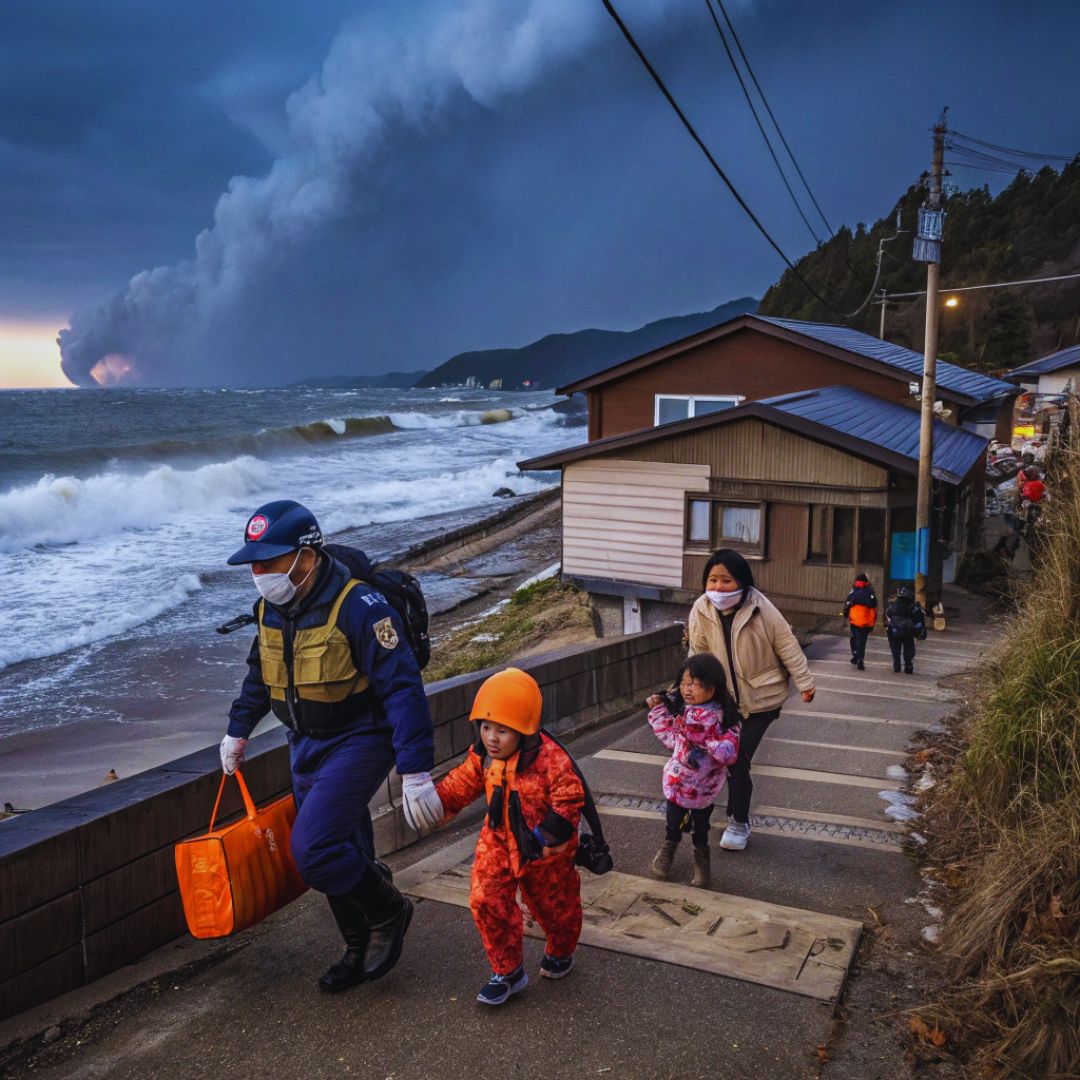A significant earthquake measuring 6.8 struck off the coast of Kyushu, Japan, on January 13, 2025, at approximately 9:19 PM local time. The epicentre was located in the Hyuganada Sea, with depths ranging from 30 to 49 kilometres. In response, Japan issued a tsunami advisory for the coastal regions of Kochi and Miyazaki Prefectures, anticipating waves of up to one metre. Although there have been no immediate reports of severe damage or injuries, residents are urged to evacuate to higher ground as a precautionary measure.
Details of the Earthquake
The earthquake’s epicentre was situated in the Hyuganada Sea, a region known for its seismic activity. The U.S. Geological Survey initially reported the quake at a magnitude of 6.9 but later revised it to 6.8. The Japan Meteorological Agency (JMA) acted swiftly by issuing tsunami advisories for the coastal areas of Miyazaki and Kochi Prefectures shortly after the quake struck.
Tsunami Advisory Highlights:
- Event Timing and Magnitude: The earthquake occurred at approximately 9:19 PM local time with a magnitude of 6.8.
- Epicentre Location: Located in the Hyuganada Sea, at depths ranging from 30 to 49 kilometres.
- Tsunami Advisory Issued: The JMA promptly issued a tsunami advisory for coastal regions, particularly Miyazaki and Kochi Prefectures.
- Expected Wave Heights: Residents were warned to expect possible tsunami waves of up to one metre.
- Public Safety Measures: Authorities urged residents to evacuate to higher ground as a precaution against potential tsunami impacts.
- Reassurance on Nuclear Safety: There were no irregularities reported at the Ikata Nuclear Plant following the earthquake.
- Historical Context: Japan’s location along the “Ring of Fire” makes it prone to seismic activity, with past earthquakes causing significant damage and casualties.
- Public Communication: The JMA reminded citizens via social media that “tsunami can strike repeatedly,” stressing vigilance and preparedness.
- Ongoing Monitoring: Local authorities are actively monitoring the situation and assessing any damage or injuries resulting from the earthquake.
- Community Preparedness: Residents are encouraged to have emergency plans in place and stay informed through official channels for updates.
In light of this seismic event, local authorities have mobilised emergency services to assess any damage and ensure public safety. As of now, there are no confirmed reports of injuries or structural damage; however, officials are closely monitoring the situation and conducting thorough inspections in vulnerable areas.
Context and Background
Japan is located along the Pacific “Ring of Fire,” an area notorious for its frequent earthquakes and volcanic activity. This recent earthquake follows a series of tremors that have rattled the region in recent months, raising concerns about seismic stability. Notably, a significant earthquake occurred last August, which had already heightened public awareness regarding potential major seismic events.
The JMA has reassured residents that there were no irregularities detected at the Ikata Nuclear Plant following this latest quake, alleviating fears regarding nuclear safety in the aftermath. Historically, Japan has faced devastating earthquakes, including one in January 2024 that resulted in over 240 fatalities and significant infrastructure damage. These past incidents serve as a reminder of the importance of preparedness and community resilience in facing natural disasters.
The Logical Indian’s Perspective
The occurrence of this earthquake highlights not only the unpredictability of nature but also the critical need for preparedness and community solidarity in times of crisis. As we process this event, it is essential to foster a spirit of empathy and support for those affected by such disasters. The Logical Indian believes that collective resilience can be built through awareness and proactive measures.
We encourage our readers to engage in meaningful discussions about disaster preparedness and share their insights on how communities can better respond to such challenges. What steps can we take as individuals and communities to enhance our resilience against natural disasters? Your thoughts could inspire positive change and foster a greater sense of unity during difficult times.











